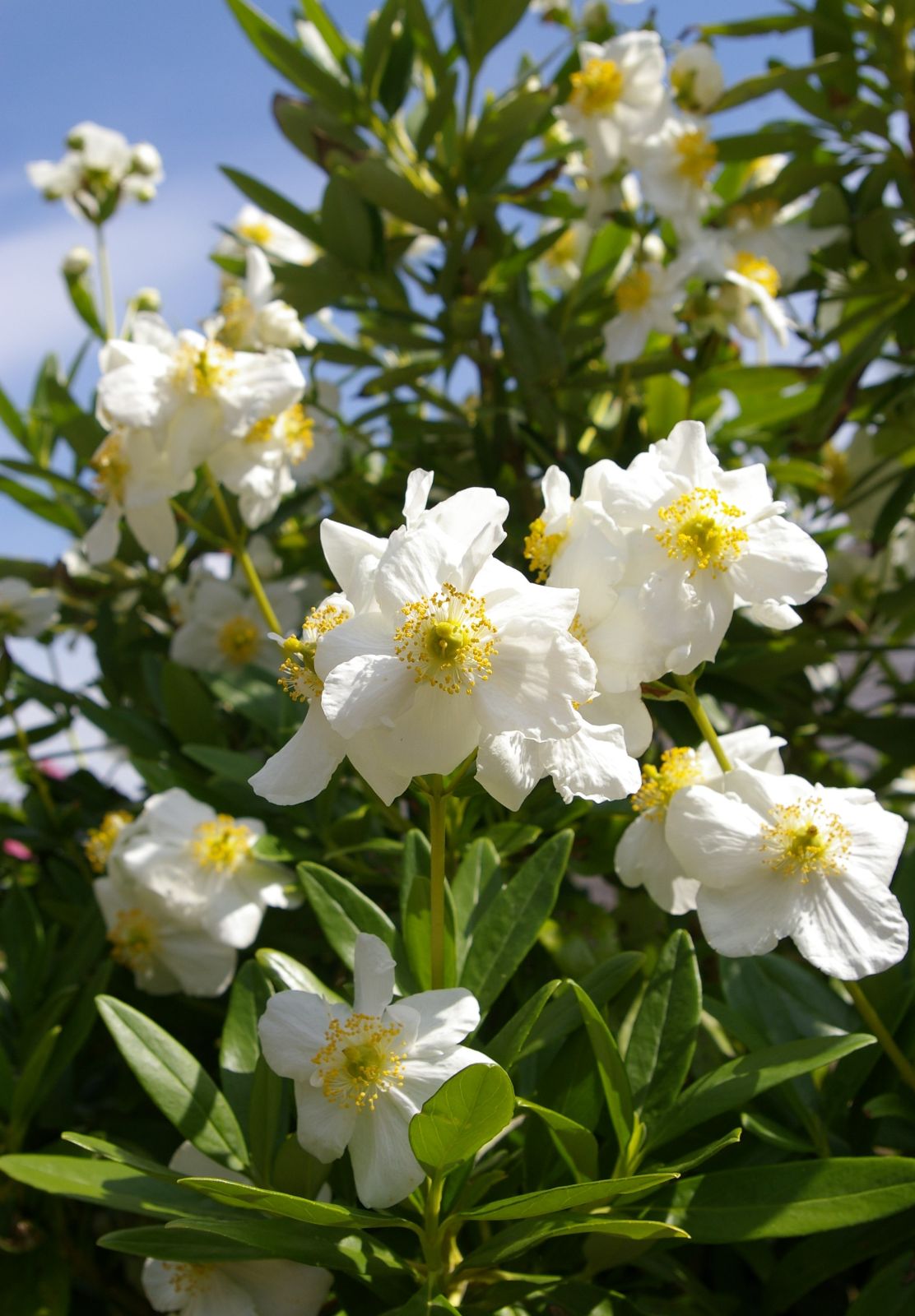Carpenteria californica
Credits
Article from Bean's Trees and Shrubs Hardy in the British Isles
Recommended citation
'Carpenteria californica' from the website Trees and Shrubs Online (treesandshrubsonline.
Genus
Other taxa in genus
An evergreen shrub 6 to 15 ft high, of bushy habit and free growth, branchlets very pithy; young bark pale and minutely downy. Leaves opposite, lanceolate, 2 to 41⁄2 in. long, 1⁄3 to 1 in. wide, tapering at both ends, not toothed, glabrous and bright green above, covered with a pale soft felt beneath; stalk 1⁄4 in. long, or almost absent. Flowers fragrant, 2 to 3 in. in diameter, pure white, produced during June and July in a terminal cluster, three to seven flowers together; petals five, roundish; calyx downy, with five ovate, pointed lobes; stamens very numerous, their yellow anthers making a conspicuous centre to the flower. Bot. Mag., t. 6911.
Native of California; discovered by Col. Fremont in the middle of the last century; introduced to Europe about 1880, and first flowered in this country by Miss Jekyll at Godalming in 1885. In places where it thrives, it is one of the most splendid acquisitions from the Californian flora. It is not hardy at Kew except against a wall, and under glass it is one of the most susceptible of all plants to injury by London fog. In the brighter, sunnier parts of England it is quite hardy on a warm wall in well-drained soil, always provided it is not softened by over-feeding. Even in the more continental climate of Cambridgeshire and East Anglia it succeeds and is hardy. At East Bergholt Place, Suffolk, it reached a height of 18 ft on a wall.
It is rather variable, and if raised from seed produces many worthless plants with rather narrow, watery-white petals. The finest forms have well-fashioned flowers almost 4 in. across with overlapping petals of good substance. These must be increased by cuttings, which root readily enough under mist, or by layering.





